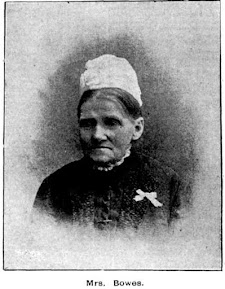What is Rookwood Cemetery Discoveries about?
This blog has been created to effectively bring
back to life those that call Rookwood home. The aim is to highlight the lesser
known or largely forgotten people who have an incredible back story or had led
fascinating lives that we can only imagine and their names may not immediately come to mind.
But firstly just a little information about the
Cemetery or Necropolis - the City of the Dead.
Rookwood Cemetery is the largest cemetery in the
southern hemisphere at over 780 acres (@ 310 hectares) and is located some 25
kilometres west of Sydney New South Wales Australia in Dharug country.
The original 200 acres were acquired in the
1860's to house the growing number of internments required due to the
burgeoning population of Sydney from the 1850's due in part to the discovery of
gold, the Industrial Revolution and the news that the former penal colony was a
great place to build a destiny in a classless society.
The area in which it lies was chosen for a number of reasons:-
Firstly it had earth that was easy to dig with the tools of the day,
picks and shovels, being mainly scrub land; secondly it's water run off to
Homebush Bay would not affect the drinking water of Sydney residents;
thirdly it was sufficiently far enough away from the City to not put a dent in
property prices and fourthly it was in close proximity to the new
Sydney-Parramatta rail line which had opened on 26 September 1855.
The original design of the Cemetery, which is the
seen to be one of the best examples of a Victorian era "gardenesque" cemetery in
the world, was by Charles Moore, the designer of the Sydney Botanical Gardens, and reflected the new idea of the time that a
cemetery should be used as a green space nurtured and utilised by the living
and not just the dead.
There were not many cemeteries that boasted a
train line directly into its heart with beautiful gardens and that is what made
Rookwood so attractive to Victorian era
residents of Sydney. The first internment was of an Anglican worker in early
1867. The funeral train with a special carriage that conveyed the coffins (free
of charge!) began running later that year and by 1869 two magnificent train
stations with waiting rooms, elaborate stonework suitably decorated with
cherubs and angels were in place. One the receiving Station on the western side
of Central Train Station and the other being the larger Mortuary Station No.1 within the Cemetery was the final stop.
This proved to be the biggest selling point for
families looking for internments for their loved ones. Everyone from the
business owner to the lowly worker could buy into the "grand"
funeral. In fact, the funeral train meant by 1872 there was a genuine need for
expansion of the Cemetery and a further 550 acres were purchased from nearby
landholders. The train was to eventually boast 4 train stations (albeit not as
grand as No.1 Station) with electrification. However from the 1930's it was apparent
that the grand funeral train was no longer attractive and motor cars took over
for conveyance. Gone were the days of parading in mourning within the pathways
of the Cemetery. The track into Rookwood Cemetery was torn up in 1948. The No.1
Mortuary Station whose roof had caught fire in 1950 was put up for tender and
eventually was pulled down and reconstructed as an Anglican church in the
suburb of Ainslie, Canberra operating from 1959.
Rookwood Cemetery was originally known as Haslems
Creek Cemetery reflecting the area's name in the 1860's. Soon landholders
raised concerns about being associated with the Cemetery and requested a name
change. Rookwood was chosen (and that decision is worthy of it's own blog -
perhaps later) about the time of the expansion of the cemetery. Soon the
residents of the area raised concerns again and in 1913 the local area was
named as Lidcombe, being a combination of Lidbury after a previous Mayor and
Larcombe, an Alderman and stonemason. Larcombe stonemasonry still operates in
East Street Lidcombe.
Other important facts about Rookwood is that it
boasts the oldest continually operating Crematorium in Australia dating from 1925 and designed by Frank Bloomfield. Its gardens boast over 10,000 rose bushes. Sydney
War Graves with it's memorials and white headstones in sync with Commonwealth
War Graves found throughout France and Belgium is located near the Strathfield entrance. The Garden of
Remembrance with it's thousands of plaques of remembrance for those lost in
war is situated next to the War Graves area.
The Cemetery boasts enclaves of nature and is the
home to many native animals of the Cumberland Plain.
This is only a small introduction to a wonderful
historical Necropolis.
Rookwood Cemetery is indeed a remarkable place.



Comments
Post a Comment